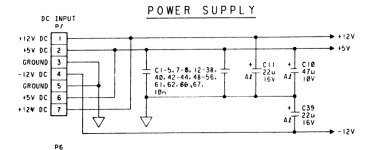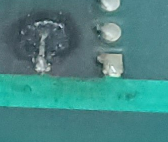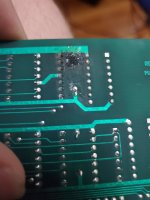This may be far fetched, and probably wrong, but I'm not sure that mark is from something on the board. The center of the the mark is not in line with the pins for the cap, and there is a small pattern to the burns. Is it possible something inside the case arced spectacularly to this board?
Edit: I was also wondering if the popping of the old rifa caps may have caused it as if I remember correctly, the psu sits below the ram board in the case
Edit: I was also wondering if the popping of the old rifa caps may have caused it as if I remember correctly, the psu sits below the ram board in the case





